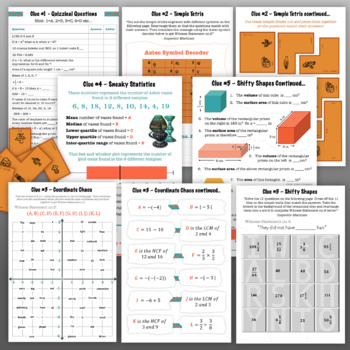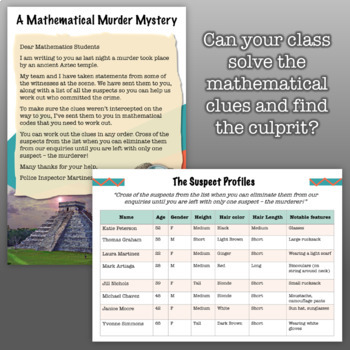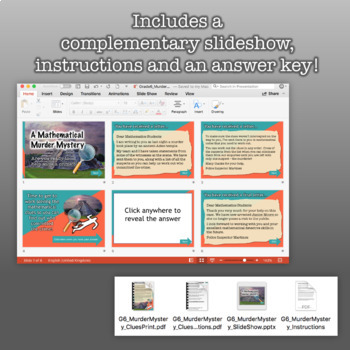GRADE 6 CSI Math Murder Mystery Activity - Fun Review of all CCSS Topics
- Zip
What educators are saying
Description
Is your class ready to solve a mathematical murder mystery?
This is a fun and exciting way to review the topics covered by the Grade 6 Common Core maths standards at the end of the year - or an exciting way to start Grade 7 by reviewing the previous year's work.
Your students will be presented with a story set up, suspect profiles and 5 mathematical clues covering different topics learnt throughout the year. It's their job to use their mathematical problem solving skills and work as a team to narrow down the suspects and find the culprit!
Download includes:
- 5 Mathematical clues covering standards from all 5 Common Core State Standards (CCSS) topics learnt in Grade 6 (Ratios and Proportional Relationships, The Number System, Expressions and Equations, Geometry, Statistics and Probability)
- Story outline page and Suspect profiles
- Complementary PowerPoint Slide Show to set the scene at the beginning and to reveal the solution at the end
- Set up instructions
- Answer key with solutions for each clue
Certain to create a fun, unique and engaging lesson!
File update history:
04/04/23 - Improved activity instructions
08/31/19 - Corrected a couple of typos





